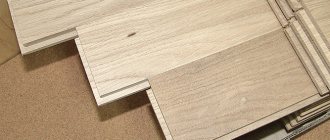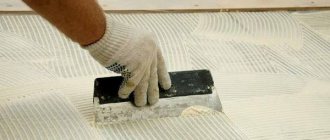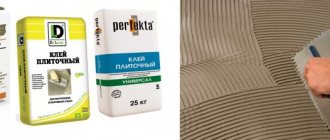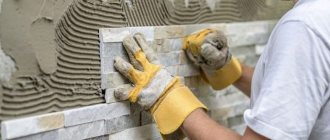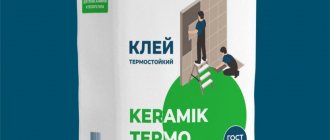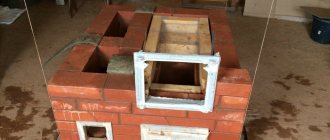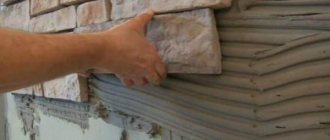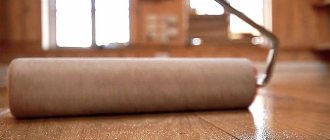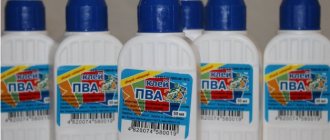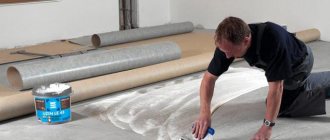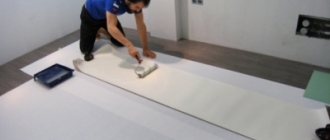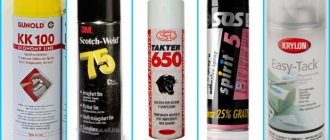To make a parquet floor look attractive, last a long time and be resistant to mechanical stress, you need to choose the right adhesive for the parquet board. Only a high-quality adhesive composition will ensure the absence of squeaking and prevent loosening of the planks and swelling of the wood. The editors of the YaNashla website have prepared a review of the best adhesives for parquet boards for 2022 especially for you. When compiling the rating, the characteristics of adhesive compositions, expert opinions and customer reviews were taken into account. As a result, only the highest quality adhesives were selected.
Requirements for parquet adhesive
In order for parquet installation to be high-quality and durable, the glue must be:
- Low shrinkage. If the glue sag significantly when drying, the parquet will begin to creak or dry out.
- Elastic. It should give the parquet board moderate flexibility. If this is not the case, then the floor will swell with changes in temperature and humidity.
- Ecologically pure. Toxic mixtures can harm people who live or work in the area.
- Low moisture content. Otherwise, the board will swell and become deformed.
- Long lasting. The service life of the adhesive should coincide with the lifespan of the parquet.
We should not forget about convenience when working. The composition should be easily applied to the surface of the base, and should not leave stains if accidentally applied to the front of the board.
Parquet restoration (repair and restoration)
In principle, at this point, installing parquet on your own can be considered complete. But I would like to shed some light on such a property of parquet as its high maintainability. It lies in the fact that parquet, after a certain service life, can be restored, i.e. restore its original appearance. Parquet restoration can also be done independently, without the involvement of specialists.
Parquet repair - sequence:
removing the top layer of varnish;
assessment of the condition of the parquet floor. To do this, each die or board is inspected for the appearance of serious defects and damage (potholes or rot, gaps, creaks, etc.). If the floor is in perfect condition, then its repair will not take much time, because you only need to update the varnish coating.
eliminating defects. If there are potholes, they can be removed by applying putty; the dies with dust must be replaced. And to eliminate the creaking of parquet, it is enough to nail the die to the base, and recess the head of the nail into the wood. Often parquet becomes unusable in certain places. Where it bears the greatest variable load, then you need to partially dismantle the planks in this place and replace them with new ones;
polishing the parquet surface;
applying varnish.
After this, the restored parquet will delight you with its fresh appearance for a long time.
Parquet care
You can extend the life of a parquet floor if you provide it with proper care. To do this you need:
carry out wet cleaning instead of traditional floor washing. This will prevent water from flowing into the cracks and drying them out;
Do not scrub the surface with abrasive compounds. This will cause whitish spots to appear on the varnish;
do not use aggressive detergents that can damage the varnish coating on the parquet;
maintain a normal constant temperature in the room;
protect parquet from mechanical damage that can be caused by moving furniture, falling objects, or stiletto heels;
apply an additional protective coating to the varnish (various types of polishes containing wax).
Conclusion
As you can see, laying parquet with your own hands is not such a difficult task. Using these instructions and fulfilling all the necessary installation requirements will allow you to obtain high-quality and beautiful parquet flooring.
Which glue is better
I want to choose the best composition that will last a long time. But the range of adhesives is represented by a large number of brands, and it is difficult to decide which will be better. You can narrow your search by determining which adhesive mixture is most suitable for parquet and subflooring.
One-component
One-component parquet adhesive is convenient because the package contains a ready-to-use product. It does not need to be further diluted, which saves time during installation. There are 2 types of one-component mixtures available:
- Water based glue. An environmentally friendly, inexpensive and convenient composition where the solvent is water. Dispersion adhesive is used if the width of the board is at least a centimeter and if the surface of the parquet plank adjacent to the base is not sanded. You cannot glue parquet elements made of wood that absorbs moisture: ash, alder, beech, fruit trees. It is also prohibited to use a water-dispersion mixture for laying parquet in damp or unheated rooms - the parquet will absorb water, swell and deform.
- On solvents. Solvent-based adhesive solutions contain no water and are suitable for any wood. When choosing adhesive for parquet under plywood, you should give preference to a water-free mixture. The composition provides high adhesion to the surface, so the parquet can withstand large mechanical loads and temperature changes. Recommended for wood species prone to moisture absorption.
When compared, it may seem that formulations with solvents are better, but this is not always the case. Adhesive mixtures of this group are toxic and have a pungent odor. When working with them, you must use protective masks to protect your lungs. In addition, solvents are flammable; mixtures cannot be used when laying parquet near fire sources.
Two-component
A quick-drying, elastic and durable two-component parquet adhesive suitable for all types of wood and can be used on any substrate. The product does not contain solvents, and polymerization occurs by mixing the hardener and the polymer base. Craftsmen often choose to lay parquet boards:
- Polyurethane. Two-component polyurethane adhesive increases the strength of parquet by 30-40%. Does not contain toxic components.
- Polyurethane-epoxy. Gives less additional strength (15-20%) and has an unpleasant odor before drying. It is cheaper than polyurethane.
Two-component products have only one drawback - high cost. But this compensates for the almost complete absence of shrinkage and high strength. Parquet floors made with polymer mixtures will last a long time.
Other formulations
Other groups of products can also be used for gluing parquet. Let's look at what other glue you can use:
- Universal. Made from rubber or natural resins. Hardens quickly. Rubber adhesive has low adhesion. If you plan to use this mixture, you need to make a special screed and prime the base well.
- Alcoholic. The alcohol-based product is odorless, easy to use and dries quickly. Good adhesive for plywood and moisture-absorbing wood. Can be used for laying on heated floors.
- PVA. The adhesive mixture based on polyvinyl acetate dispersion is non-toxic and has high moisture and heat resistance. Used for parquet made of wood of all species. Suitable for laying decor on any base.
In order for the parquet to last as long as possible, you should take the choice of adhesive seriously.
Having decided on what basis to buy a product for laying parquet planks, you can move on to choosing an adhesive.
Instead of an epilogue
An analysis of the market for adhesives in the Russian Federation for parquet boards showed an almost complete absence of Russian manufacturers in this segment. Such circumstances are associated with the lack of appropriate technologies in domestic firms, and even their presence will not be able to bring down the competitive prices of Western companies. Still, it is worth recognizing that our buyer is provided with good and high-quality glue options at a very reasonable price. Moreover, most samples are universal and can work not only with wood. It is also worth noting that the mixtures have additional functionality, for example, frost resistance, and most products from the middle and premium segments regularly use innovative technologies (meaning enhanced MS polymers for one-component samples). This suggests a legitimate conclusion - although this market in the Russian Federation is not replete with an abundance of options, for the most part it is able to satisfy any request of a potential buyer both in terms of the functionality of the product and its price.
Review of popular brands
Let's consider the popular tools that the construction market offers:
- Artelit. Rubber based. Suitable for gluing parquet flooring to any substrate. Can be used for heated floors and on surfaces where there is vibration.
- Moment. Bonds all types of parquet finishes: plywood, wood, laminated coverings. Quick-drying, durable, moisture-resistant.
- Bostic Tarbicol. Water-dispersible vinyl. Tarbicol sets quickly. Designed for gluing small-sized parquet tiles with a rough working surface.
- Coswick. Anhydrous elastic polyurethane composition. Universal, suitable for all types of coatings.
- Kiilto. On a PVA basis. Non-flammable, environmentally friendly, hardens quickly. Kiilto is used for a piece set of small parquet floors.
- Craft. Two-component, durable. Can be used for laying massive elements.
- Super-Grip. Epoxy adhesive that can withstand large temperature changes. Glues any materials.
- KS. Universal with mineral additives. Non-toxic, non-flammable. Connects any base.
- Murexin. Two-component polyurethane. Reliably glues any coating.
- Slim. Designed for gluing all types of parquet boards to concrete or building slabs. Two-component, durable.
- Axton. Water dispersion for parquet. Eco-friendly, safe for health. Glues firmly.
- Bona. Polyurethane, two-component, universal.
- Stauf. A line of adhesives based on alcohol, water or polyurethane.
- Repox. Epoxy-polyurethane, designed for various substrates. Has a good adhesion rate.
- Adesiv pelpren. Two-component parquet adhesive. Using the product, you can lay elements of any size.
- Eurocol Frodo 148. Reactive adhesive for mounting any board on all types of substrates.
Having familiarized yourself with the assortment of construction companies, it is worth considering another nuance of choice - the characteristics of the bases for gluing.
The choice of glue depending on the coating
Before purchasing glue, you need to evaluate the type, nature of the work and size of the materials:
- Laying plywood on concrete. Adhesive for parquet on concrete screed must be selected with high adhesion and elasticity. Solvent-based or two-component formulations are suitable.
- Gluing solid boards. Mixtures with rubber or two-component ones are recommended.
- Piece set. For block parquet, regardless of the nature of the base, a composition with PVA is suitable.
Taking into account the characteristics of the coating and the characteristics of the floor base, you can choose the optimal adhesive composition that will ensure the strength and durability of the glued parquet.
Types of adhesives
For gluing parquet flooring to plywood sheets or to a cement screed, different types of adhesives are used. Each adhesive composition has its own advantages, certain properties and features.
Let's look at the main types of adhesives used for laying parquet floors:
- Dispersive.
- Solvent based.
- One-component.
- Two-component.
- Rubber.
To use a particular glue, you should take into account its characteristics and features:
- moisture resistance;
- flammability;
- frost resistance;
- adhesion to the base;
- hardening time.
To make the right choice, you should dwell in more detail on each of the varieties.
Additional tips for choosing parquet adhesive
When choosing a composition, you additionally need to take into account the load on the floors:
- Huge pressure. A two-component adhesive with high adhesion is optimal.
- Dimensions of parquet planks. A wide parquet board adheres well to the main surface, but under load, lateral tearing is possible. You need glue with high elasticity, preferably polyurethane based. For small slats, a rubber compound is suitable.
When laying parquet in rooms with a heavy load on the floor, you do not need to save on building materials. By purchasing compounds at a discount, you can get fake adhesives that do not have the necessary strength characteristics. This will certainly affect the quality of the parquet installation.
Is it necessary to prime the surface?
Despite the fact that some types of adhesives indicate that they can be used without priming, this stage of work should not be neglected. Application of primer will provide:
- binding of dust particles remaining on the surface;
- uniform absorption of glue;
- adhesive strength.
A double primer is applied using a roller. After applying the first layer, you need to wait for the composition to dry and repeat the procedure. Installing a parquet board on a primed base will be stronger.
Basic rules for laying parquet boards
Before laying parquet flooring, you need to check the humidity and temperature of the concrete screed. It is better to do this using a special device. Particular attention should be paid to measurements in corners where there is high humidity.
If you don’t have the device, then you should focus on the approximate hardening time of the concrete – about 2 weeks. The humidity level required to continue finishing work should not exceed 5%.
Glue mounting method
Laying this way is quite reliable. You just need to prepare a large notched trowel and a small tool. Laying algorithm:
- parquet glue (slightly larger than the size of the board) is applied to the screed or other base that has dried after the primer with a ridge spatula;
- parquet is laid on the surface coated with adhesive and lightly fixed with light pressure (excess protruding from under the plank is immediately removed).
If the parquet slats are small, then it is allowed to lay out 3-4 parts of the pattern at once.
Option without rigid fixation
No glue is used. The joints of parquet flooring are connected using a locking system:
- a backing is laid on the floor (the joints of the material are secured with tape);
- lay out the first lamella with its upper part facing the wall;
- lay the boards parallel in a row, lightly tapping them with a wooden hammer;
- the next row of parallel elements is laid with an offset of ½ lamella.
Fixation of parts is strong. After completing the last row, you can walk on the parquet.
Using additional fasteners
Used when laying thick parquet flooring:
- parquet tiles are laid on glue, fastened with locks;
- A self-tapping screw is screwed in every 30-35 cm along the surface of the coating.
This fastening method is characterized by increased strength.
How to lay parquet on a concrete floor
The lamellas are laid on the concrete screed in the same way as on other surfaces. But here you need to take into account several nuances:
- lay the elements on a durable cement screed;
- before laying, check the moisture content of the concrete (no more than 5%);
- glue for parquet boards on screed must be selected with high adhesive properties.
Laying a parquet floor yourself is not difficult. But to ensure the strength and durability of the decorative coating, you need to select the appropriate adhesive and prepare the base.
How to lay parquet on plywood - step-by-step diagram
Step 1: Marking the ground
It will look smooth on paper, but it makes more sense to lay the plywood directly on the floor in the form of ready-made square sheets - initially without fasteners. The size of the squares should be such that there are no interparquet seams on the lines of their joints. For example, if the tiles have a size of 15x15 cm, plywood sheets should be cut with a side of 70 cm. Sizes larger than 80 cm are not recommended to be used due to the possible “windage” of the sheets during fastening. The placement of plywood squares on the floor should imitate brickwork. The displacement can be either half the sheet or only 20-30% of its size. The main thing is to ensure that the seams from the longitudinal and transverse sheets do not converge at one point. Along the perimeter of the room, cut sheets are installed last.
Step 2: We can easily handle it with a jigsaw and deftly cut it with a hacksaw
Standard plywood sheets have sizes of 125x125 and 125x250 cm. Naturally, you want to cut them with minimal waste and maximum accuracy. To do this, it is best to use an electric jigsaw and a wide workbench - cutting 12 mm thick plywood into squares of 60 by 60 or 75 by 75 cm will take no more than half an hour. Sawing with ordinary hacksaws and saws will require a lot of effort and is unlikely to be done alone. Wide sheets will have to be held so that the hacksaw blade does not get pinched - for this you need to hire an assistant or special devices (spacers, wedges, clamps, etc.). Depending on the size of the room(s), one or more whole sheets are reserved for installation of cut plywood inserts around the perimeter.
Step 3: Preparation again
The leveled and dried cement-concrete base should be inspected again - after preliminary laying out the plywood, cracks, peeling of the mortar, potholes, etc. could have formed on it. They should be removed with a quick-drying sealant. The entire surface must be cleaned of debris and dust. It is best to perform final pre-laying treatment with a vacuum cleaner; it will be quick and effective.
An ordinary broom will also work, but you will have to wave it carefully (dust is unacceptable!). Under no circumstances should the broom be wetted when cleaning; installation of plywood sheets should be done on a dry surface. The final preparatory stage is priming
In fact, this is an analogue of priming ceilings, only it is done on the floor. Glue for plywood - it is often identical to the adhesive composition for parquet - is diluted several times and the entire surface is coated with a wide brush. Thanks to priming, dust and small debris are once again removed from the floor, and the adhesive mass penetrates into the cement base for reliable installation of plywood sheets
The final preparatory stage is priming. In fact, this is an analogue of priming ceilings, only it is done on the floor. Glue for plywood - it is often identical to the adhesive composition for parquet - is diluted several times and the entire surface is coated with a wide brush. Thanks to priming, dust and small debris are once again removed from the floor, and the adhesive mass penetrates into the cement base for reliable installation of plywood sheets.
Step 4: Attaching the Plywood to the Floors
Pre-cut sheets are mounted on adhesive mastic. It is convenient to apply the glue to the floor, and not to the underside of the plywood, using a notched trowel. The fasteners are supplemented with self-tapping screws, screwed in in increments of 15-20 cm. For plywood squares with a side of 60-75 cm, 4 screws along each side and 4-5 in the central area are sufficient
It is very important to achieve complete “recession” of the screw heads; even a minimal protrusion will interfere with the installation of the parquet itself. And the metal notch will obviously not help with subsequent grinding. Therefore, it is necessary not only to drill out the plywood sheet for the self-tapping screw, but also to accurately countersink the hole with a larger drill bit
Each screw is checked for sufficient depth (at least 2 mm from the base)
Therefore, it is necessary not only to drill out the plywood sheet for the self-tapping screw, but also to accurately countersink the hole with a larger drill bit. Each screw that is screwed in is checked for sufficient depth (at least 2 mm from the base).
Laying plywood under parquet in the corners of the room is done by cutting the sheets in place, leaving a gap of 10-15 mm between the wall and the floor. For processing use a grinder and sandpaper with a grain size of 1-2 mm.
When sanding, pay special attention to the joints of the sheets. After cleaning the sanding results, you can begin installing the parquet on a new base - dry, strong and reliable.
- 5
- 4
- 3
- 2
- 1
